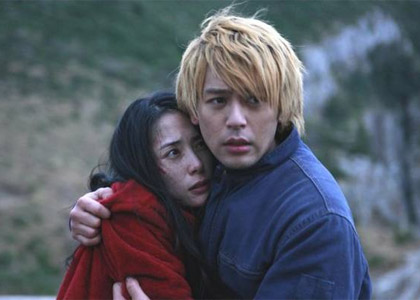WIT Life #176: 悪人
WITLife is a periodic series written by professional Writer/Interpreter/Translator Stacy Smith (Kumamoto-ken CIR, 2000-03). She starts her day by watching Fujisankei’s newscast in Japanese, and here she shares some of the interesting tidbits and trends together with her own observations.
First off a huge OMEDETOU to the Japanese women’s soccer team for winning the World Cup over the weekend! I watched the game with the Japanese delegation I have just begun interpreting for, and needless to say it made our night. The victory has been a nice boost of encouragement for the country, and is something all of its citizens can take pride in.
The Japan Cuts film festival at Japan Society is going strong in its second and final week, and in my next few entries I hope to discuss some of the great movies I’ve been seeing. But today I’d like to talk about another interesting film that made its New York premiere when it was screened last week as part of the Nippon Eiga series sponsored by ANA. It was 悪人 (Akunin) or Villain, and featured the two amazing actors Satoshi Tsumabuki (as the villain) and Eri Fukatsu (as the woman who falls in love with him). It was directed by Sang-il Lee who also made Hula Girls, another movie that was screened as part of ANA’s series a few years back.
Fukatsu received the Best Actress award at the Montreal World Film Festival last year for playing this role, a worthy performance. She and Tsumabuki always have great chemistry (I loved them in the 2005 summer drama Slow Dance as a couple you know belong together, but take a while to get there). Both of their characters in this film are loners who meet via an online dating site, and finally find the love that is missing in their lives. However, there is a cloud of darkness hanging over their relationship, that being that he has recently killed a young woman. When he confesses to her what he has done, the lovers go on the lam but we know that they can’t outrun reality forever.
Via flashbacks, we learn what happened the night of the murder. The perpetrator of this horrific crime is the ostensible villain, but when we learn of his motivation and related characters are introduced, it causes the audience to question who the real villain(s) is/are. This dark film offers commentary on many issues plaguing contemporary Japanese society, such as isolated youth disconnected from others and only out for themselves. The movie runs longer than two hours so could stand to be cut a bit, but overall it is worth sticking with until the end as the climax will throw you for a loop.
My friend and I had different interpretations of what this conclusion meant, so the film will definitely leave you with something to think about. During my last trip to Japan I picked up the book that the movie was based on, and I am eager to start reading to hopefully find answers to these remaining questions.


Comments are closed.